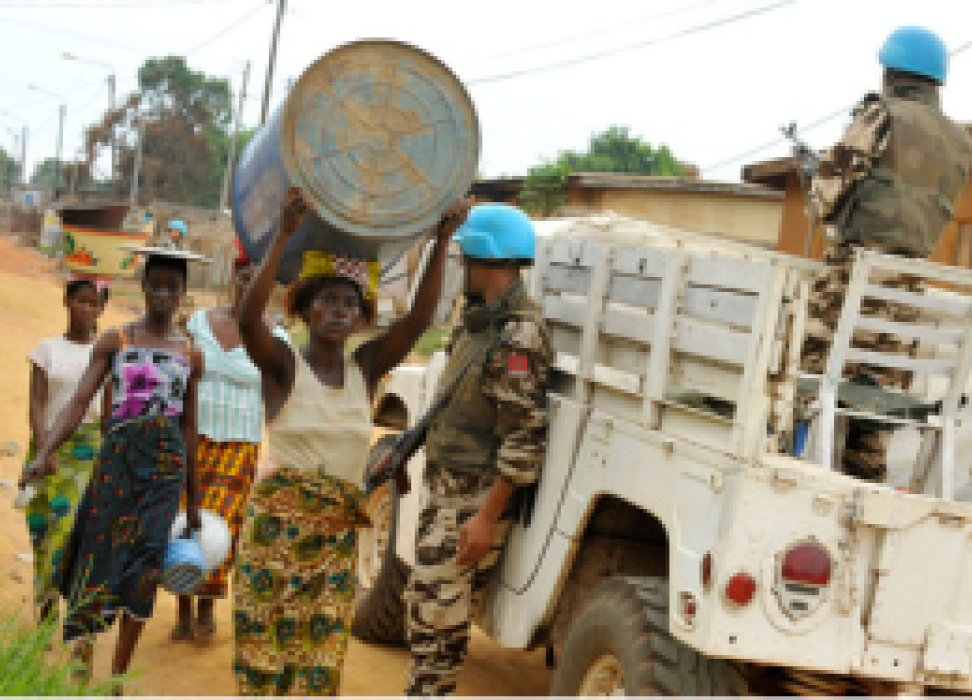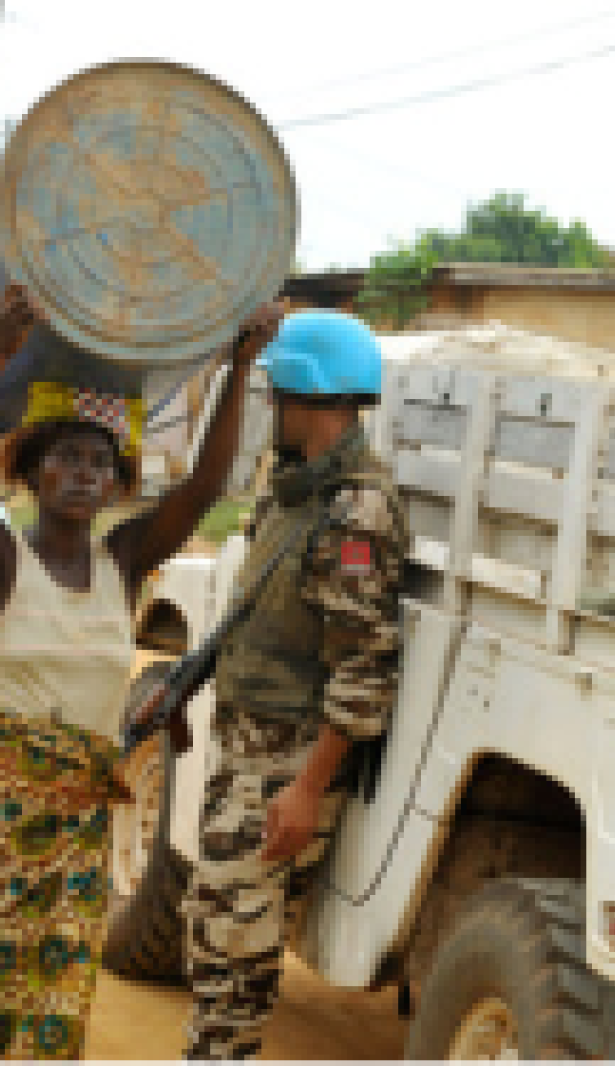Wanted: New ways to protect civilians in conflict
26 June 2012

“Too many people are dying, in too many places. Sometimes they are caught in the crossfire; frequently they are targeted,” United Nations Secretary-General Ban Ki-moon told a Security Council debate on 25 June 2012 in New York.
The open debate on the protection of civilians in armed conflict also heard from the UN Human Rights chief, Navi Pillay, and the UN head of Humanitarian Affairs, Valerie Amos.
“More and more, we are witness to an appalling catalogue of sexual violence, forced disappearances, torture and other acts that violate, often egregiously, international humanitarian and human rights law,” Ban said.
The Secretary-General highlighted challenges for civilian protection, including the need for parties to conflicts to do more to comply with international humanitarian and human rights law; the need for a more systematic engagement with non-State armed groups; provision of resources and forces to UN peacekeeping missions; ensuring safe, timely and unhindered humanitarian access for civilians trapped in conflict; and the need for accountability, centred on national authorities taking the steps necessary to protect civilians or bring the perpetrators of war crimes and gross human rights violations to justice.
“I…urge the Council and Member States to consider new approaches to prevent and respond to violations of international humanitarian and human rights law and ensure that the protection of civilians receives the attention it demands,” Mr. Ban said.
In her statement delivered by Assistant Secretary-General for Human Rights, Ivan Šimonović, the UN Human Rights Chief, Navi Pillay, welcomed the Security Council’s increased practice of referring to the findings of commissions of inquiry established by other UN bodies.
“This Council can play an important role in enhancing the impact of the work of commissions, by requesting States and other actors to cooperate with them, making more consistent use of the information and analysis they produce, ensuring the protection of persons who cooperate with them and indeed by establishing them itself,” she said. “Justice and protection of victims can be advanced by supporting the implementation of their recommendations and considering specific follow-up actions aimed at ensuring accountability.”
Commenting on the deteriorating situation in Syria, Pillay called on the international community to assume its responsibilities and act together to prevent further violations.
“Actions that directly contribute to escalating the violence, such as providing arms, can only result in more civilians being killed and injured,” she said.
Pillay called for the lifting of Israel’s blockage of the Gaza Strip that has been in place for five years and led to severe restrictions of basic rights. The protection of civilians, she said, “also requires that all sides distinguish between combatants and civilians and avoid provocations, such as border incursions and targeted killings, which too often lead to destruction, injury and death.”
The UN Human Rights chief said she was seriously concerned by the reported deaths and injuries of civilians resulting from counter-terrorism operations in Yemen, Pakistan and Somalia.
“Many of these casualties have resulted from the use of armed drones. I share the concern expressed by the Secretary-General with respect to the lack of transparency regarding the circumstances in which armed drones are used,” she said.
The UN Humanitarian Affairs chief, Valerie Amos, said that strengthened compliance with the letter and spirit of international humanitarian law and human rights law was the solution to may of the problems seen in present day conflicts.
“Ensuring such compliance begins, of course, with the parties to the conflict,” Ms. Amos said. “But the responsibility is not theirs alone. It is a responsibility that is incumbent on us all – the United Nations, its Member States and this Council. We can and must do more to fulfil that responsibility and ensure that the law has meaning for those it is intended to protect.”
25 June 2012

VIEW THIS PAGE IN:
